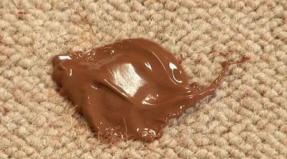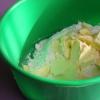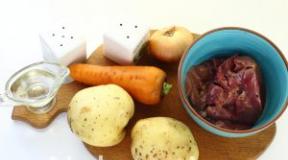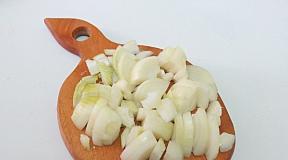Are fusel oils harmful? Are fusel oils in moonshine harmful or useful for human health?
August 28, 2018
Some call them the "soul" of moonshine, others are sure that they lead to poisoning and addiction. What function do they perform? Harm or benefit to the body from their presence in a homemade alcoholic drink? Let's try to understand this difficult issue!
Sivukha - where does it come from and what is its evil?
Some admirers of moonshine are sure that fusel oil (this is how fusel oils are popularly called) impairs its quality: it gives an unpleasant taste and makes it an enemy of health - it causes organic damage to the liver, destroys the brain and provokes other disorders in the body.
But what is meant by the term "fusel oils"? This is a group of substances that unites over 40 components. They are a by-product of alcoholic fermentation, which is formed when using any raw material (sugar, fruit, starchy).
Of this total, only 27 elements have been identified. Some negatively affect the quality of alcohol and are inherently poisonous to humans. Furfural, acetone, isoamyl and isopropyl alcohol have toxic properties. So, the first of the listed components irritates the skin, causes damage to the nasal mucosa, eyes and can even cause eczema. Isoamyl alcohol is no less poisonous and dangerous.
You can see fusel oils with the naked eye. To do this, it is enough to conduct a simple experiment at home: collect a spoonful of moonshine, set it on fire. When the burning process is over, a brown-brown or greenish oily liquid with a repulsive odor will remain at the bottom of the spoon. This is the very notorious booze.
If the amount of such distillation by-products in alcohol is too large, then its use can really cause serious damage to health.
The terrible and unpleasant consequences of the action of fusel oils:
- headache;
- long-term nausea;
- loss of orientation in space;
- convulsions;
- dizziness;
- heart rhythm failure, rapid pulse;
- severe hangover syndrome;
- addictive;
- damage to the liver and other internal organs;
- decreased sperm quality in men;
- mental health problems;
- poisoning, up to death (if the amount of toxic substances is significantly higher than the conditional norm).
But fusel oils in moonshine prepared at home in compliance with the necessary technologies do not enter the body in "lethal" concentrations, therefore, when consumed in limited doses, a person does not feel a sharp deterioration in health and a painful hangover. However, with regular drinking of alcohol, even such an amount of booze will be enough for an irresistible craving for alcohol to form and irreversible changes in the body begin.
Poisonous but not useless?
Not all fusel oils in moonshine have been identified and studied yet, so it is reliably impossible to determine whether they bring harm or benefit. According to researchers studying their action, some of these substances perform important functions - they prepare the liver for a meeting with alcohol, help the body to independently neutralize the toxins contained in alcohol. This reduces the risk of developing addiction and the degree of intoxication. But these are not all the potential advantages of sivukha.

Useful qualities of fusel oils:
- give the moonshine a pleasant color and aroma;
- increase its taste characteristics;
- reduce the strength of the drink.
Important! Although fuselage directly affects the taste sensations that arise after drinking moonshine, its excess threatens health! Moonshine can be considered relatively harmless if it is made from quality raw materials, has undergone complex purification and filtration!
Even experts in the field of winemaking will not be able to "by eye" determine how much fusel is contained in alcohol. Smell, taste and transparency can serve as a marker of its quality. If the moonshine is cloudy, smells disgusting, has an unpleasant taste, then it is better to refuse to use it. But the matter here may be not only in the availability of fusel oils!
How to make moonshine safe?
Everyone who takes a responsible approach to the "production" of moonshine and cares about the quality and safety of their product, tries to remove the maximum amount of toxic impurities and leave the necessary and safe components that affect the organoleptic properties of the drink. For this, various cleaning methods are used.
The most common cleaning methods for "pervak":
- Egg white: it precipitates, binding substances that poison the body.
- Potassium permanganate. This is one of the most accessible and simple methods, but experts do not recommend using it, since potassium permanganate itself is quite toxic!
- Activated carbon. It is a powerful absorbent, so it absorbs poisons.
- Bread. The use of such a "filter" allows not only to remove the fuselage, but also to give the drink a pleasant aroma.
- The most effective methods for getting rid of moonshine from impurities involve the use of special devices - a dephlegmator (dry steam chamber), a rectification column, a bubbler. Their disadvantage is their high cost, but the cost of purchasing them will be paid off by the impeccable quality and safety of the finished product.
To remove fuselage from fruit distillate, experts advise to do this: perform a double distillation, while the output must be divided into fractions, which are called "body", "head", "tails".
On a note! If the technology is observed, the concentration of fusel oils should not exceed 100 - 630 mg / l. But the problem is that it is impossible to measure these indicators at home, since the number of components can go up to 45. To perform a composition analysis, a laboratory is needed.
Making homemade good quality moonshine is a very responsible and difficult process. In addition to making mash and distilling it, it is important to have skills in additionally processing alcohol. There are many ways todaycleaning moonshine from fusel oils at home... This process allows you to get rid of the drink from harmful impurities, unpleasant smell and taste. This solution allows you to get better quality moonshine and avoid pickling.
The process of removing harmful impurities and fusel oils is an obligatory and integral process of making high quality moonshine. Most of the methods involve the separation of harmful components in the interval between distillations, that is, in the future, the purified moonshine is re-distilled.
For the best result, professionals advise, dilute the drink to a strength of no more than 40 degrees, and in some cases up to 20 degrees of strength. This is due to the fact that fusel oils in this concentration are separated much easier and more efficiently. It is better to stand for 2 days before cleaning and cool to a temperature of 15-18 degrees.
Each method presented below for cleaning moonshine works to varying degrees of effectiveness. Therefore, for greater effect and better result, it is worth approaching the issue in a comprehensive manner and applying several options at once. Good quality moonshine should be crystal clear, if the drink remains cloudy, then harmful components are still present in it.
Purification of moonshine from fusel oils at home
Craftsmen have come up with many options to cleanse alcohol from fusel oils and harmful impurities. Each of them provides for the use of one or another sorbent.
Pasteurized milk
The most common and frequently used cleaning method. Milk allows you to remove unpleasant odors and make the taste of the drink more noble. The main difference of this sorbent is that its use does not require repeated distillation, since no third-party products of the interaction of milk and alcohol are formed.

The cleaning process is as follows.
- Pour milk into alcohol. You need to use only pasteurized raw materials, otherwise the moonshine becomes cloudy. For 10 liters of alcohol, 100 ml of milk is enough.
- Stir the mixture and close the lid.
- Place the container with alcohol for a week in a dark, cool place and shake it daily.
- Drain off the sediment and filter through cotton wool or a clean flannel cloth. You can add additional sorbent in the form of crushed coal.
The result is pure moonshine ready for use.
Egg white
Chicken egg white contains components that have a unique ability to absorb excess substances and bind fusel oils. As a result, the harmful components fall out as a residue, and the filtered alcohol is obtained pure.

- Separate the yolks from the whites at the rate of 2 eggs per liter of beverage.
- Mix eggs with a little warm water or milk, beat with a mixer.
- Pour into alcohol and leave in a cool, dark place for a week.
- Twice a day, you need to shake up the purifying alcohol in order to separate the fusel oils as much as possible.
- Filter the drink through cotton wool several times.
Moonshine can be drunk immediately, but for greater effect it is better to repeat the distillation, separating fractions.
Activated or charcoal

The fastest way- use coal. In this case, there are two options for organizing the process. Filtration can be configured immediately during the distillation process. To do this, the moonshine dripping from the tap is directed into the container through a funnel, in the base of which a cotton pad is inserted, on which coal is located. Cotton wool is also laid on top. The alcohol is cleared immediately.
The second option involves adding coal directly to the can of moonshine. After the liquid has settled (within 1-2 weeks), it must be filtered. Re-distillation required.
Potassium permanganate
Another way to cleanse a strong drink of excess impurities. To achieve the desired effect, it is required to dilute 1 g of potassium permanganate in 100 ml of water for each liter of alcohol. The liquids must be combined and left for 12 hours. After the specified time, you need to filter the composition through a few layers of gauze. In this case, re-distillation is required.

Freezing fusel oils
Everyone knows that when freezing, water first freezes up, and alcohol freezes at lower temperatures. This feature allows you to rid alcohol of harmful impurities. Fusel oils freeze together with water and in time the strong part of the liquid can be drained out of them. It is better to drain the alcohol several times. It should be remembered that the degree of the drink rises.

Baking soda
To clear moonshine from fusel oils at homesoda will help, this product is available and is in almost every home. For every liter of alcohol, 10 grams of baking soda is required. For a complete cleaning, it is necessary to let the moonshine settle for at least 12 hours. We filter the liquid as standard and send it for re-distillation.

Vegetable oil
An original approach to purifying moonshine. The oil must be refined and odorless, otherwise the third-party aroma will be fixed in the moonshine. The essence of the effect of this component is that fusel oils merge with vegetable oils, and water and alcohol are exfoliated from it.
For every liter of strong drink, you need 20 grams of oil. It is important to mix the ingredients thoroughly; it is necessary to mix the components 3-5 times with an interval of 5 minutes. Then let stand for 12 hours. Then carefully drain the alcohol through a straw without disturbing the oil film.

Water filter
The easiest way to clean moonshine is with a regular water filter. The filtering process must be performed twice, using a new filter each time.
Rye bread
In the not too distant past, fresh rye bread was considered the ideal way to purify spirits. But upon closer examination, it turned out that this approach implies a combined cleaning. First, moonshine is peeled with an egg or milk, and then 100 grams of bread are crumbled for each liter of drink. Then the container is placed in a dark cool place to settle for 3 days. Then the liquid is filtered, if necessary, you can repeat the process to get rid of the yellowish tint.

Fruit and vegetable mix
Remove impurities andto clear moonshine from fusel oils at homefruit will help. In addition, this approach allows you to add fruity notes to the drink. Fruit peeling can be used as an intermediate option between two distillations, as well as for final peeling before use.
Usually, one carrot and an apple are added to 3 liters of moonshine. They are cleaned, cut into large pieces, and a center with seeds is cut out. The drink settles for no more than 3 days, until the fibers begin to separate from the contents, then filtration and distillation or consumption.
Fusel oils are an essential component of home-made moonshine. Their presence determines the color, smell, taste of any alcoholic product. Even the degree of a hangover is determined by the concentration and composition of fusel oils. Despite the fact that the opinions of most lovers of homemade moonshine who make it at home are unanimous in their opinion about the harmfulness of fusel oils. However, this is wrong.
When properly cleaned, these components are not harmful to health.
By their nature, fusel oils are toxic substances with an unpleasant odor with a yellow or reddish color. They are formed as a by-product of the fermentation of sugar, starch or fruit raw materials.
Navigation
How harmful
When fusel oils enter the circulatory system, they can cause the most unpredictable and negative consequences. Of course, their concentration in high-quality moonshine is not so great, but even this small amount can cause significant damage to the body.
First of all, the mucous membrane suffers, with which they are in direct contact. Further, getting into the digestive tract, there they continue their destructive activity. After absorption into the blood, they can provoke such phenomena as dizziness, nausea, and in some cases cause severe intoxication of the body, leading to death.
What does cleaning give?
Having found out the harm of the presence of these components in the moonshine, it is necessary to decide how to get rid of them. There are many recipes and methods that can be used to minimize the presence of these oils in the finished product.
After evaluating the consequences of drinking moonshine with a high content of fusel oils, do not skimp on the purchase of special equipment for secondary distillation, a rectification column or other devices. If this is not possible, use all available methods to maximize the removal of "booze" from home brew.
Methods and methods of cleaning
Activated carbon
The most famous and common way to clean moonshine. Due to the high ability of activated carbon to absorb toxins and the relative cheapness of the product, it is used in most cases as a primary purification. For proper cleaning, you need about half a kilogram of charcoal. Pharmaceutical activated carbon, unfortunately, will not give such efficiency as natural wood material due to industrial processing (grinding and pressing).
The cleaning technology looks as simple as shelling pears. A glass or stainless steel pipe must be filled with charcoal, cover one side with cotton wool, bandage, napkin or other material that allows liquid to pass through, but which will retain fine coal dust. Further, moonshine is poured into the upper hole, which, passing through the pipe through activated carbon, is cleared of fusel oils. The longer the tube and the slower the alcohol drips out, the cleaner it turns out.
Milk
The process relies on the natural ability of natural protein to fold when exposed to alcohol.
The method is absolutely safe and harmless. No investment required. The only negative that may confuse you is that if milk is too high in fat or alcohol is not strong enough, the final product may acquire a cloudy hue. This does not affect the taste in any way, impairing only the aesthetics of the drink. In view of this, it is recommended to use milk with a minimum fat content and stop trimming the "tails" early to avoid loss of strength.
The procedure is simple and straightforward:
- Mix milk and purified moonshine at the rate of 100 g of milk per 10 liters of moonshine. By the way, you can use powdered milk, after diluting it in warm water and letting it settle for several hours.
- Mix everything, cover it and put it in a shaded place, protecting it from direct sunlight. Shake the mixture daily for 5 days.
- When protein coagulates, white flakes are formed, which precipitate.
- After 5 days, strain the moonshine using a cotton filter, after separating the mixture from the sediment. Harmful fusel oils bound by protein will remain in the container in the form of sediment
Potassium permanganate
Another well-known cleaning method is potassium permanganate. Dissolve 1-2 g of potassium permanganate in 1 liter of moonshine or use the appropriate proportion (5 grams will be enough per bottle). Shake well and leave to stand for a day at room temperature, excluding direct sun exposure. By analogy with milk, whitish flakes should form. After clarifying the moonshine, also strain the drink through a cotton-gauze filter.
Freezing
The method consists in "using for one's own benefit" the physical properties of impurities present in the moonshine. Nothing needs to be added anywhere. Just place the moonshine in a resealable container and put it in the freezer. Under the influence of negative temperatures, nothing will happen to the alcohol-containing component (vodka does not freeze!), And the existing impurities and harmful substances of a different density will freeze along the edge of the surface in the form of a thin layer of ice.
Take out a bottle of moonshine and, without defrosting, immediately pour the moonshine into another container. Everything that remains in the bottle in the form of frozen ice is the harmful impurities.
Soda
Self-talkers also use soda for cleaning. However, opinions differ regarding the quality of the resulting product. Therefore, to avoid unwanted disappointments, use baking soda as a purifier in a dry steamer. Just add a teaspoon of baking soda to the dry steamer for your primary distillation. This allows you to significantly reduce the level of harmful substances in the resulting drink.
Considering the environmental friendliness and safety of the proposed cleaning methods, their consistent application is allowed. Using one or more of the methods for purifying moonshine from fusel oils listed in the article, as well as taking into account the proposed tips and recommendations, you can get a product of the highest class, characterized by a mild taste and a neutral odor. Properly refined moonshine, when consumed in moderation, never causes a hangover. Be healthy!
Hello everyone!
I have been preparing this article for a very long time. It is dedicated to one of the most important topics in the production of alcoholic beverages. We all know that heads, tails and fusel oils are harmful and spoil the taste of moonshine. But what is hidden behind these concepts? Do you know what the finished wash contains over 70 volatile substances!? Some of them are the strongest poisons, but at the same time they have a pleasant floral or bread aroma.
This article provides information, knowledge and understanding of which allows you to move on and improve in the production of homemade alcohol.
It is worth adding that in the process of studying the materials for this article, my view of such a process as fractional distillation has changed significantly.
In this article I will tell you what the mash consists of, what groups of impurities it contains, from what they are formed and which of them are the most harmful. And most importantly, how these impurities behave during the distillation process.
I will also give a very interesting table with a description of specific impurities and the reasons why they are formed and how they affect the taste and smell of the drink.
The composition of the mature (ready-made) mash
The finished wash consists of many different components in three phases - liquid, solid and gaseous.
- The solid phase (4-10% of the mash mass) is a suspension of yeast and particles of raw materials, as well as minerals, sugar, proteins, and other elements that are not dissolved in a liquid that remain in the distillation still after distillation.
- The gaseous phase is carbon dioxide (CO2) produced by the yeast. Content - 1-1.5 g / l.
- The liquid phase is water (82 to 90 wt%) and ethanol with volatile impurities (5 to 9 wt%).
We, in the context of this article, are most interested in these very volatile substances accompanying ethyl alcohol. There are over 70 of them in the braga!
But, despite such a wide variety, their total amount is only 0.5-1% of the volume of ethyl alcohol. At the same time, even such a small content of impurities significantly affects the taste and smell of the final product.
The diagram below shows the approximate composition of the finished wash and alcohol impurities.

The volatile components in mature mash can be divided into four main groups: alcohols, ethers, aldehydes, and acids.
In the following sections, I will look at each group individually.
Alcohols
They are derivatives of hydrocarbons containing one or more hydroxyl groups (OH). According to the number of hydroxyl groups contained in the molecule, alcohols are monohydric (with one OH), diatomic (two OH), triatomic and polyatomic.
The mash contains monohydric alcohols and only one representative of triatomic alcohols - glycerin (is non-volatile).
Monohydric alcohols have the general formula CnH2n + 1OH.
By value n, alcohols are divided into:
- Lower - methyl (methanol) CH3OH; ethyl (ethanol) C2H5OH; propyl C3H7OH and isopropyl C₃H₈O.
Almost all lower alcohols have a pronounced "alcoholic" smell. Mix well with water in any proportion.
- Medium alcohols
Butyl, isobutyl, sec-butyl, tert-butyl - general formula C4H9OH. Amyl - Amyl, isoamyl, etc. The general formula is С5Н11ОН.
Butyl alcohols smell like alcohol. Tert-butyl smells good with camphor. Isoamyl smells strongly of "booze"
- Higher alcohols: hexyl (C6H14O), heptyl (C7H15OH), octyl (C8H17OH), nonyl (C9H19OH), etc.
Alcohols are the largest group of impurities - from 0.4 to 0.6% of the ethyl alcohol content. Alcohols with carbon atoms from C3 to C10 form fusel oils. They are called oils because they are poorly soluble in water and have an oily appearance. Isoamyl (60-90%), isobutyl (8-27%) and propyl (3-20%) alcohols are the basis of the fuselage.
All alcohols, including ethyl alcohol, are poisons. The most dangerous of these is methanol. It is 80 times more toxic than ethyl alcohol! Taking only 10-15 ml of methyl alcohol leads to severe poisoning, loss of vision and, in most cases, death. The methanol content in the mash depends on the raw material from which the mash is prepared. Most of all it is in distillates from stone fruits - 3-4%. In sugar moonshine, methyl alcohol is absent (or rather, it happens there, but in very small quantities).
Isoamyl alcohol is also a great danger. It is poorly soluble in water, has a characteristic "booze" smell and is well felt in moonshine. But it is most of all in fusel oils!
Aldehydes
Aldehydes are the oxidation products of alcohols, in the molecules of which the COH group is present.
All aldehydes are poisons. The most dangerous is furfural. It is 80 times more toxic than ethanol! Moreover, GOST for rectified alcohol prohibits the presence of furfural, despite the fact that the presence of such a dangerous poison as methanol allows up to 0.03%. It smells good of rye bread. Sugar mash does not contain it, most of all is in acetaldehyde mash. Regardless of the feedstock. It will have a suffocating odor.
Some of the aldehydes smell unpleasant (those with 1 to 6 carbon atoms) and some (over 6 carbon atoms) have a pleasant floral scent.
Aldehydes have different water solubility.
For more details about each component and how it affects the organoleptic properties of moonshine, see the table below.
Acids
The mash contains volatile carboxylic acids. Acetic acid CH3COOH predominates. The presence of pelargonic, capric, caprylic and other acids is also possible. Their presence depends on the raw materials used. Acids boil at temperatures above 100 C. They dissolve in water in different ways. Most acids negatively affect the organoleptic qualities of moonshine - they give an unpleasant smell and bitterness. Acetic acid, on the other hand, softens the taste of alcohol.
For more details about each component and how it affects the organoleptic properties of moonshine, see the table below.
Ethers
They arise from the interaction of alcohols and acids. They are simple and complex. In the wash obtained from any feedstock, ethyl acetate is present in the greatest amount.
Enanthic esters are released from wine yeast during distillation.
Esters appear not only during fermentation and distillation, but are also introduced along with the raw material from which the wort is prepared. Grape mash is very rich in these substances.
Esters have a pleasant floral or fruity aroma.
Table of impurities contained in the wash
Below is a table listing the main impurities associated with ethyl alcohol. It also indicates from what these components are formed and how they affect the organoleptic properties of moonshine.
Reduction of PO is the threshold of sensation. Rows with elements that negatively affect the taste properties of the distillate are highlighted in red, green - positively. At first I wanted to arrange them as the boiling point increased, but then I realized that this was pointless. Why? Read the next section.
The table will increase if you click on it with the mouse.

Table continuation. The picture is also clickable

Heads, tails and intermediate impurities
It is customary to divide the distillate into three fractions - heads, body and tails. Once you got to this article, then you already know this well, but I will still remind you.
- The heads go first. These are mainly ethers and aldehydes, therefore the heads are also called the ether-aldehyde fraction (EAF). They have a pungent smell. It is widely believed that heads are impurities with a boiling point below ethyl alcohol. In fact, this is not the case.
- The body is a fraction consisting predominantly of ethyl alcohol. Actually what we drink.
- Tails. Comes in the end and smell bad.
If everything were that simple, then we would pour everything that goes from the cube to the boiling point of ethyl alcohol into the sink, take it away and stop the distillation when the temperature exceeds 78.15 degrees. But there are two big BUTs (the second BUT is the biggest):
- All impurities begin to evaporate long before their boiling point. The tail fractions are present both in the head and in the body, only in much smaller quantities. For example, water is present in large quantities in the distillate, although we never distill the moonshine to 100 degrees cubed.
- In a multicomponent mixture, the boiling point of an individual impurity fades into the background. The main role here is played by the evaporation coefficient of a particular impurity. Moreover, this coefficient is not constant and depends on the concentration of ethyl alcohol in the mixture. In other words, the same component (say, methyl alcohol) under different conditions can be both the head and tail fractions.
Summing up, we can say that there are head fractions that always come before ethanol, for example, acetaldehyde. There are caudal, such as furfural. And there are impurities, the behavior of which depends on the concentration of alcohol in the mixture. These factions are called intermediate.
I would like to note that this behavior is very unpleasant for you and me. It turns out that we selected the heads, changed the receiving container and proceeded to select the body. After some time, the strength of the raw alcohol has changed and some nastiness, which, according to our ideas, in its bulk should go in the tails, crawls forward and begins to go into the receiving container.
A typical representative of intermediate impurities is isoamyl alcohol, which is the basis of fuselage.
This topic is very serious and deserves a separate article. I will write it shortly.
Update from 07/16/17: The article on intermediate impurities is ready.
conclusions
- The composition and amount of impurities in the wash from different raw materials are different.
- Sugar mash contains almost no such potent poisons as methanol and furfural. The most dangerous are acetaldehydes and isoamilol. At the same time, there are practically no components that have a positive effect on organoleptic properties. Therefore, we boldly clean the raw oil and coal.
- In cereal and fruit and berry mash, there are esters, which give the drink high taste. Such ethers must be passed into the distillate during distillation, while not letting in impurities harmful and impairing the organoleptic properties. This requires the development of a certain distillation process and skills acquired with experience.
- The composition and amount of impurities is influenced by the quality of the feedstock, the fermentation and distillation process. This once again confirms the already established rules - we introduce yeast feeding, we provide optimal and constant fermentation temperature, comfortable hydromodule... We clarify the sugar mash before distillation, preferably bentonite... We carry out the first distillation as quickly as possible.
- Perhaps the most important takeaway- the order and concentration of the release of some components from the mash or raw alcohol does not directly depend on the boiling point of these impurities, but is characterized by the evaporation coefficient, which depends on the concentration of ethyl alcohol in the mixture. The head factions can go in the tails, and the tails in the heads. Moreover, the component can change its behavior during the distillation process as the ethanol evaporates.
Conclusion
These are the conclusions I came to. This is just an introductory article and leaves more questions than answers.
In the future, I plan to study in more detail the issue of the evaporation rate.
Distillation processes of mash from various raw materials. Of course, the preparation of grain and fruit distillates is a kind of art that cannot be taught. But I think it is possible to work out some general recommendations. More precisely, they probably already exist - a huge variety of specialized literature has been released and there is a lot of useful, albeit scattered information on the forums. It remains only to study it, group it and post it on the blog. Nothing at all
I hope this article will give rise to a very interesting series - I would like to study the composition of mash made from various raw materials and determine some general rules for their distillation.
P.S. I would love to hear comments from people who understand chemistry. Maybe someone will add something or correct me.
Bye everyone!
Fusel oils
Fusel oil- a by-product of alcoholic fermentation, contained as an impurity in unrectified ethanol (raw alcohol) obtained by fermentation and released from it during the rectification process.
Fusel oil is an oily liquid with a pungent unpleasant odor, from light yellow to red-brown in color and with a density of 0.83-0.84 g / cm3 (at 20 ° C). The composition and properties vary depending on the raw material and modes of fermentation and selection of fractions during rectification, the yield during rectification of raw alcohol is 0.3-0.7%.
Saturated alcohols and aldehydes are products of amino acid metabolism by yeast, which undergo oxidative deamination with the formation of α-keto acids, which are then decarboxylated to aldehydes, which, in turn, are reduced to alcohols:
RCH (NH 2) COOH RCOCOOH RCHO RCH 2 OH
Wikimedia Foundation. 2010.
See what "Fusel oils" is in other dictionaries:
Products of the normal fermentative metabolism of yeast. The main components of S. of m are by-products of the exchange of isoleucine, leucine and valine - a mixture of monohydric alcohols, aldehydes. They are a poisonous oily liquid with ... ... Microbiology Dictionary
- (cognac, grape vodka). The material for obtaining grape S. is wine, grape pomace, and wine yeast. Arab doctors knew how to prepare wine by distilling wine even before the 10th century, although the methods of obtaining it were kept secret. In the XIV ... ... Encyclopedic Dictionary of F.A. Brockhaus and I.A. Efron
VODKI- VODKAS, strong alcoholic drinks, which are an aqueous solution of ethyl alcohol either in pure form or with an addition of flavoring and aromatic substances. Depending on the starting materials, alcohol content, relevant impurities and ... ...
ETHANOL- ETHYL ALCOHOL, wine alcohol, alcohol, alcohol, ethyl hydroxide, ethanol, CH3 ■ CH2 OH, a constant component of fermented beverages (various wines, kumis, kefir). In nature, it is found everywhere where fermentation processes take place. In a very ... ... Great medical encyclopedia
Antiquity did not know now everywhere widespread types of vodka (Eau de vie, Branntwein, Schnaps, Brandy, whiskey, see Vodka), as distilled strong, or alcoholic, drink, because the art of distillation (see this word) was developed in the era ... ... Encyclopedic Dictionary of F.A. Brockhaus and I.A. Efron- FERMENTATION, vigorous decomposition of organic matter, caused by microorganisms, and this process serves as a source of kinetic. energy. Real B., in the narrow sense of the word, are not associated with oxidative processes due to the 02 atmosphere and ... ... Great medical encyclopedia



















